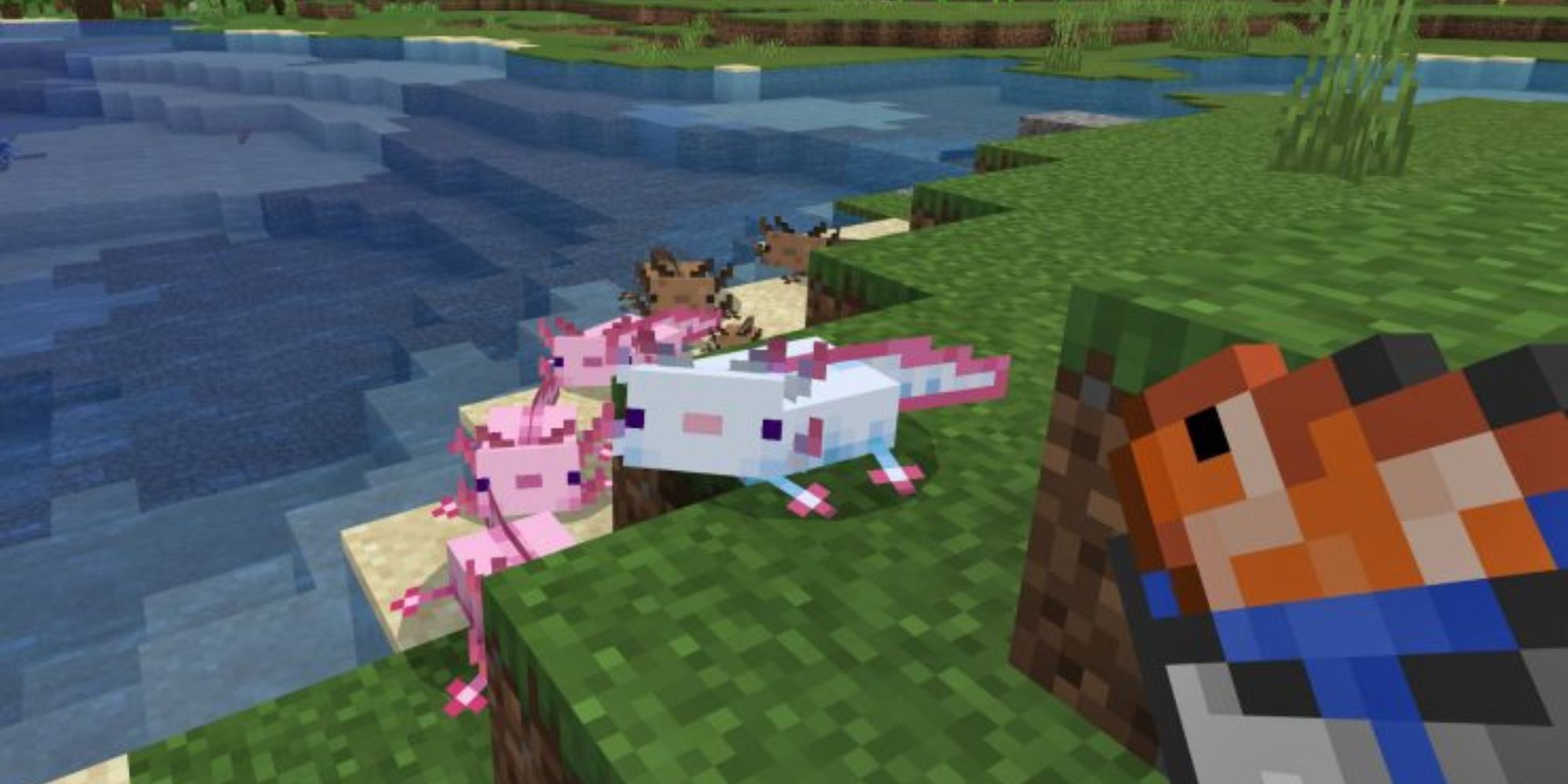As years go by, new things continue being added to Minecraft. Each update sees changes for long-time and first-time players to discover. In the 1.17 patch, the Axolotl was introduced. The Mexico-native creature is popular the world over for being cute. Its digital counterpart is no exception.
Finding these adorable amphibians is only one part of getting them to be your pet. More so if one color is desired by a player above others; they do come in a variety of colors. Let’s dive in and gain a swimming friend.
Locating
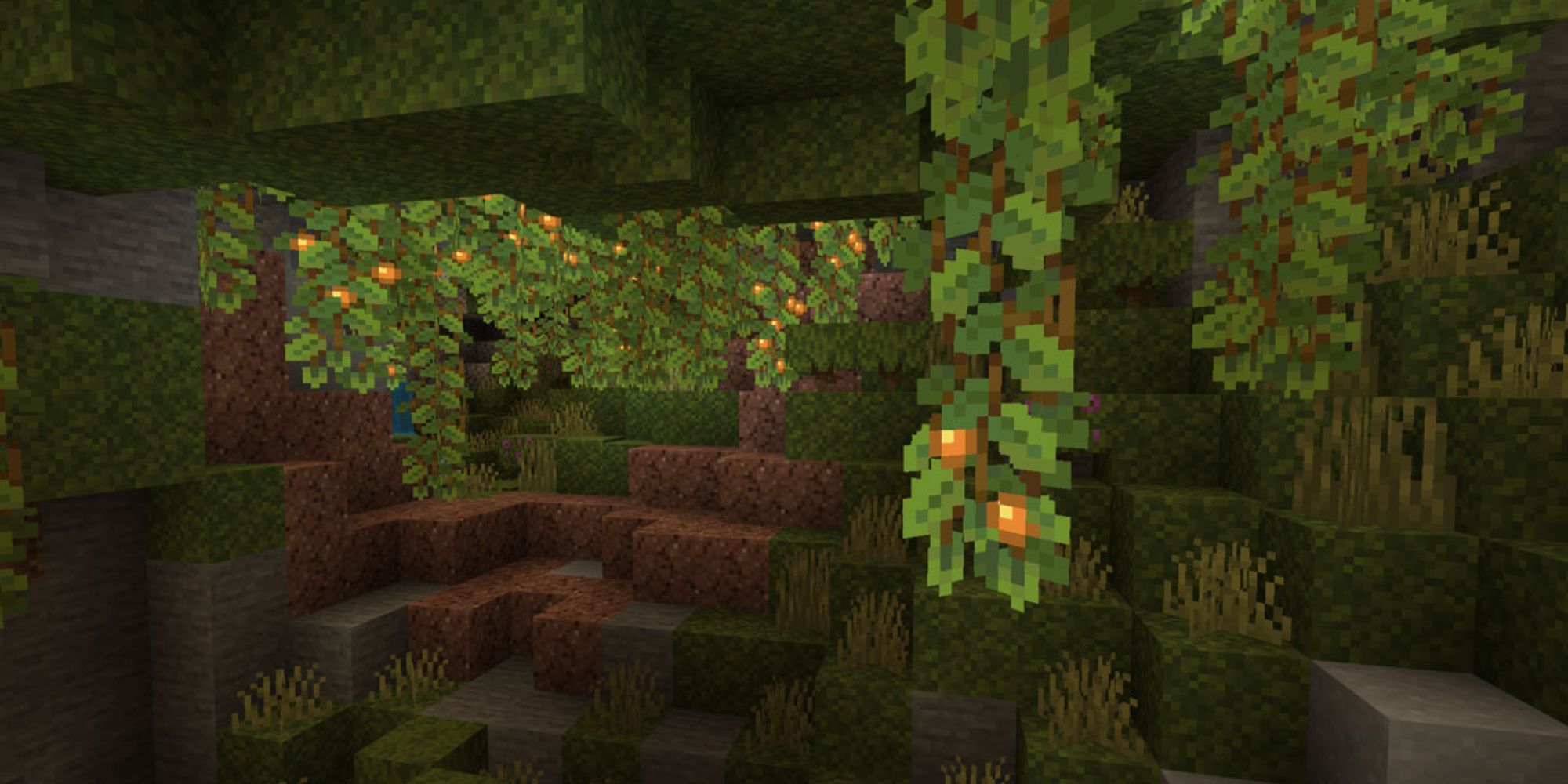

When trying to get an axolotl, you must first find the correct biome for them to spawn. They live in the Lush Caves Biome. An overworld cave biome that can spawn anywhere on the Y-coordinate, but must be underground.
As the Lush Caves are a temperate area, it is easier to find underground pockets of this biome beneath regions with high humidity. These include Jungles, Wooded Badlands, Dark Forests, and Old Growth Tiagas. The biome can also occasionally spawn in warmer areas of the Ocean, and normal deserts. It will not spawn underneath regular forests, plains, or savanna as these do not produce enough humidity.
The Lush Caves can be identified by their specific flora and fauna leading into them. There will be Azalea trees growing up from the ground. Hanging above will be vines with Glow Berries providing a small amount of natural light. Grass will be patched around with some moss carpets on dirt and unique rooted dirt blocks. Hanging roots will also be seen among the other ceiling coverings including a large, pink flower that produces spores. Aptly called a Spore Blossom.
Once the proper flora has been identified, look around for a waterway. If it is part of the biome, there will be Dripleaves on the surface. This is where the Axolotl will spawn. Some will come to the surface or hang out on the shore, but it’s more likely that jumping into the water will be necessary.
Catching
There are a few methods a player can use to get one of these aquatic creatures to be their friend.
The tried and true leash method
If you’ve played Minecraft for any length of time, you know that leashes exist, and you can use them on wild animals. Simply equip the leash in your hot-bar or your off-hand slot, and click appropriately on the animal. Congratulations. You’ve kidnaped them.
Pull them along behind you, and walk them back to wherever it is you call home. Be careful on steep areas while making sure they don’t lag. The leash can “break” and the Axolotl will be freed. You can pick the leash back up, and repeat the process until you get them home, though.
Making them a pet
Get yourself a few buckets of fish, and feed the desired axolotl until it becomes tame. At this point, it will follow a character without the need for a leash. That’s saying you don’t get too many blocks away from it. This method still requires walking one or more Axolotls home which can become dangerous for your new friend. There is an easier way, still.
Kidnap in a water bucket
Those buckets you were going to use to catch fish? Use them to catch your Axolotl instead. That’s right. Axolotls act in the same manner as fish, and can simply be scooped up into a bucket. Equip your water bucket, swim down in the waterway after the desired amphibian, and scoop them up.
Successful capture creates a Bucket of Axolotl that will stay in your inventory. This also means not trying to walk a skittish creature across long expanses. Just put it in your water bucket in the cave, and then dump it out in a pond or aquarium of your choosing.
Variations
Axolotls in Minecraft come in 5 different color variations. Four of them are common colors, and one is a rare mutation of sorts.
Leucistic/Lucy – Pale Pink with Rosy accents
Brown – Dusty Brown with Deep Mud accents
Gold – Goldenrod with Mustard accents
Cyan – Pale Blue with Pink accents
Blue – Periwinkle with Orange accents
Lucy, Gold, Cyan, and Brown are the common colors that appear most often. They all have the same chance of appearing when this mob spawns. They have a 24.98 percent each of the overall 99.917 percent chance.
The remaining 0.083 percent chance is given to the rare color variation – Blue. Rare becomes an understatement with numbers like that, but it is possible to find them in the wild still. If you happen to see one, know that the RNG is in your favor, and maybe head out for diamonds afterward.
Farming
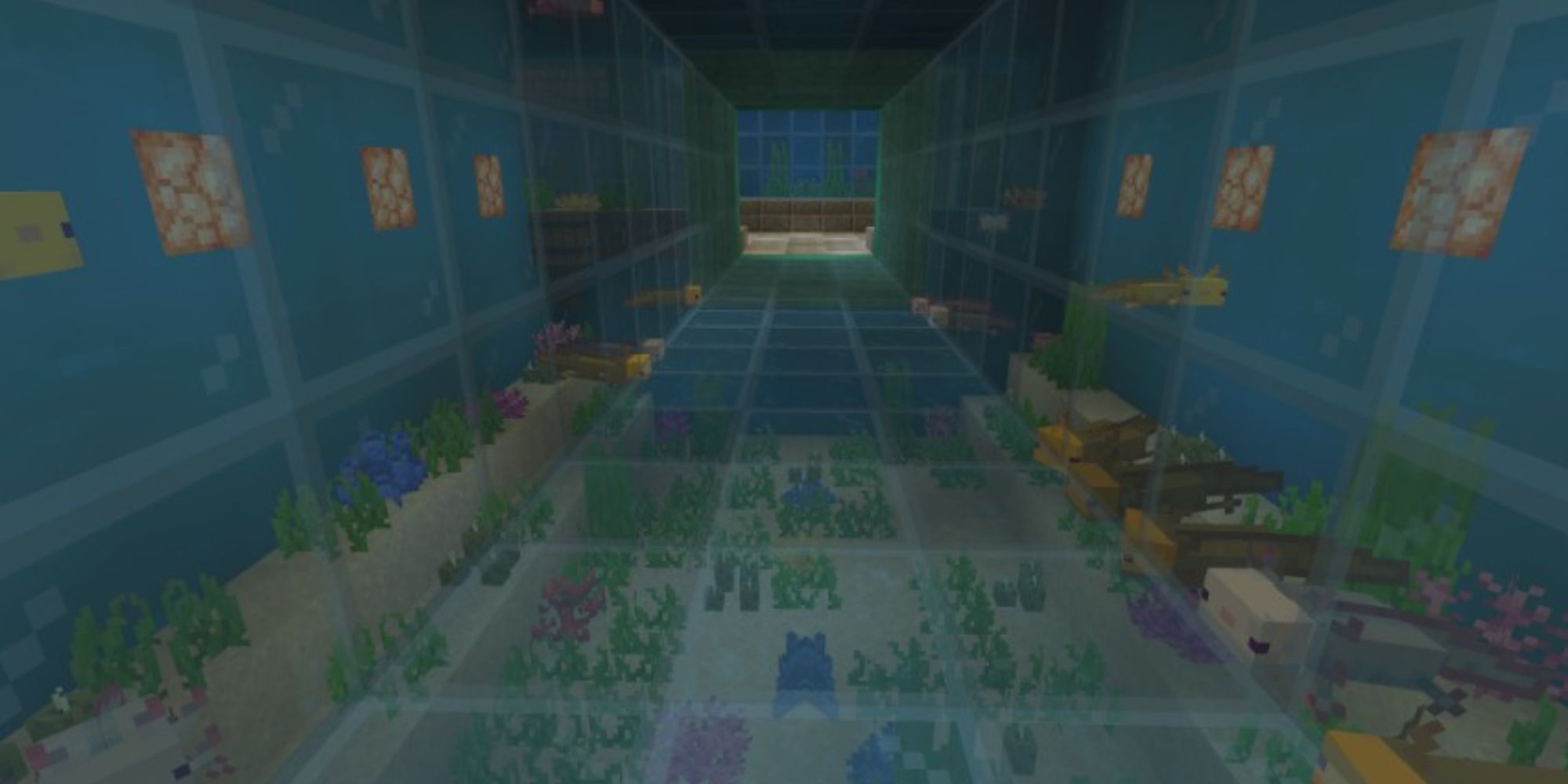
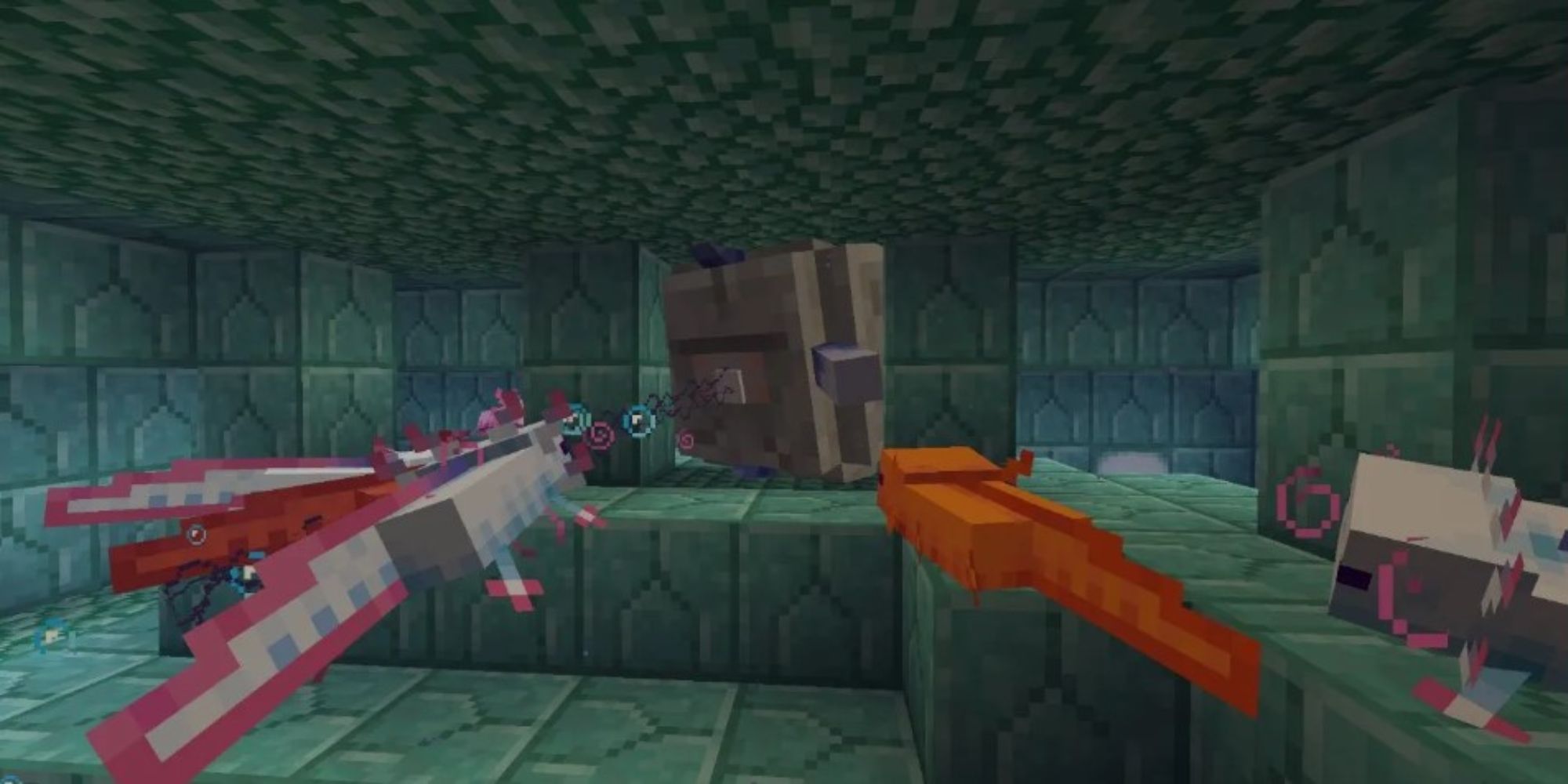
Once you have your Axolotls how you want them, farming can begin. They will not drop anything upon death, so there’s no need to make a crusher for these passive creatures. They also don’t produce a constant material that can be harvested.
Aside from being an aesthetic point in a base, there is only one other use. Combat. This typically passive mob will fight all other aquatic mobs with few exceptions. Other Axolotl, frogs, turtles, and dolphins will not be bothered by these little swimmers. Drowned, on the other hand, will be hit for 2 hearts per attack from your little friend. Set them up near underwater locations, and you have an adorable army to defend your stuff.
They will sometimes play dead in combat and regenerate 4 hearts of their overall 14 hearts if this happens. Your amphibian friend will prioritize attacking hostile mobs like Drowned over non-hostiles like fish and squids. This makes them a great helper in underwater enemy mob farms.
Care Notes
Axolotls cannot be placed in boats as this will kill them. They can walk on land unlike other aquatic mobs like dolphins. This has a limit. If one gets more than 16 blocks away from a 2-block-deep area with water, they will go off in search of their needed hydration. Should it fail to find the necessary deeper water, it will die in 6000 ticks or 5 real-world minutes.
The Bucket of Tropical Fish is their only food source. This will tame them, and allow them to be bred. When breeding Axolotls for colors, the child has the same 0.083 chance to become a Blue variant unless one of the parents is Blue. Otherwise, the baby has a 49.96 percent chance to be one parent’s color and the same chance to be the other parent’s color. For example, if you bred a Lucy with a Cyan you would get another Cyan 49.96% of the time, a Lucy 49.96% of the time, and a Blue 0.083% of the breeds.

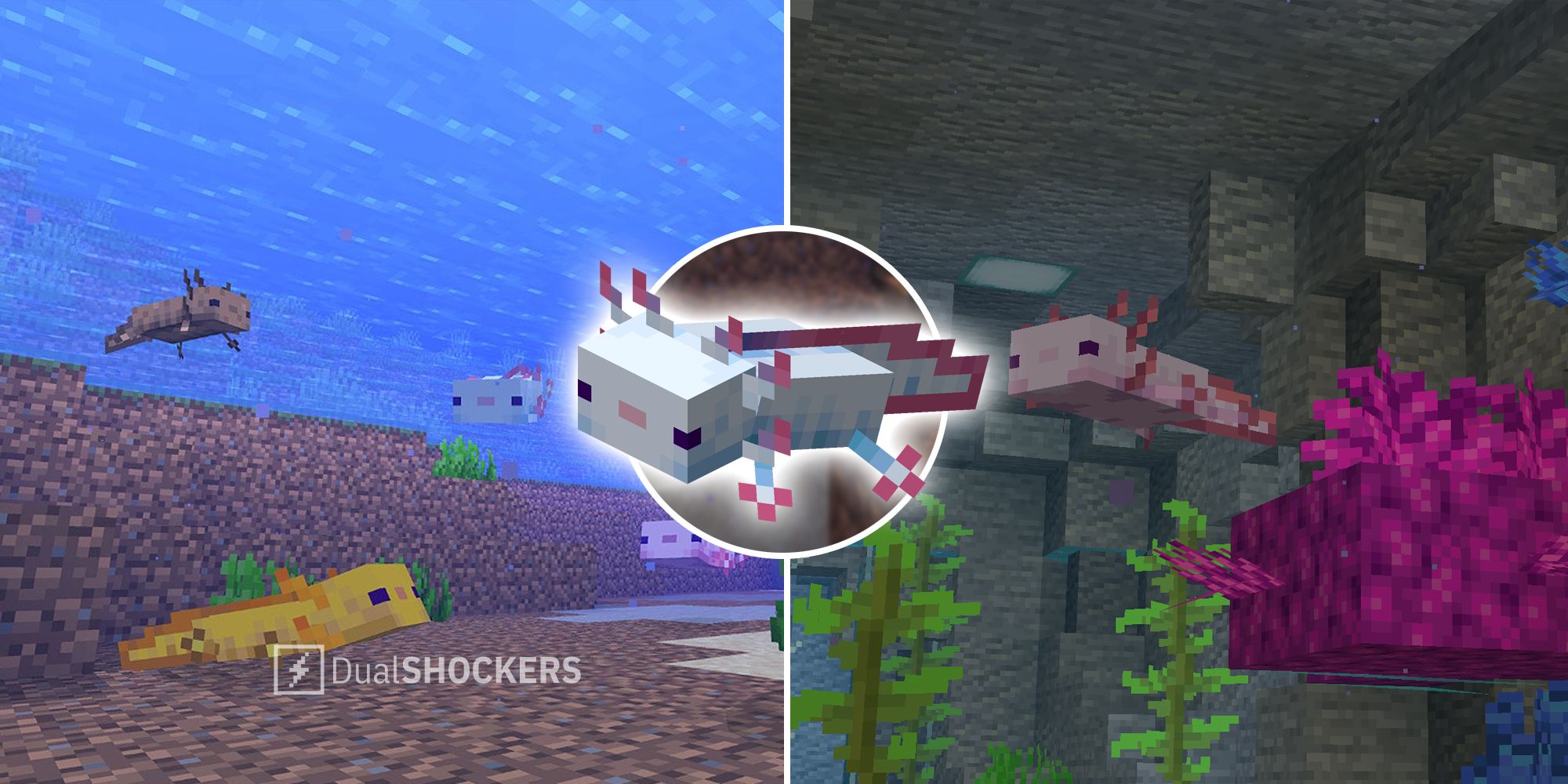
-1.jpg)
